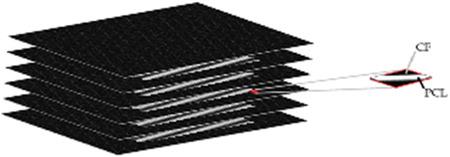当前位置:
X-MOL 学术
›
Adv. Eng. Mater.
›
论文详情
Our official English website, www.x-mol.net, welcomes your
feedback! (Note: you will need to create a separate account there.)
Achieving Pseudo‐Ductile Behavior of Carbon Fiber Reinforced Polymer Composites via Interfacial Engineering
Advanced Engineering Materials ( IF 3.4 ) Pub Date : 2020-09-15 , DOI: 10.1002/adem.202000822 Gábor Szebényi 1 , Balázs Magyar 1 , Tibor Czigany 1, 2
Advanced Engineering Materials ( IF 3.4 ) Pub Date : 2020-09-15 , DOI: 10.1002/adem.202000822 Gábor Szebényi 1 , Balázs Magyar 1 , Tibor Czigany 1, 2
Affiliation

|
This article presents an investigation of the properties of interfacial engineered carbon fiber (CF) reinforced polymer (CFRP) composites. Poly(ϵ‐caprolactone) (PCL) is used as an interface engineering/interlayer material to modify the interfacial shear strength (IFSS) between the phases, with which it is aimed to increase the pseudo‐ductility of CFRPs. A stable crack propagation behavior can be achieved through interfacial engineering due to the locally weakened connection between the resin and the fiber reinforcement. Various grid patterns of PCL interfacial additive are designed, and 3D printed on the unidirectional (UD) CF (UDCF) surfaces by fused deposition modeling (FDM) and the UDCF is infiltrated with an amine‐cured epoxy (EP). The resulting composites are subjected to mechanical tests. In each case, the PCL‐rich interphase increases ductile pseudo‐behavior, and the type of grid affects the mechanical response.
中文翻译:

通过界面工程实现碳纤维增强聚合物复合材料的假塑性行为
本文介绍了界面工程碳纤维(CF)增强聚合物(CFRP)复合材料的性能研究。聚(ε-己内酯)(PCL)用作界面工程/夹层材料,可修改相之间的界面剪切强度(IFSS),旨在提高CFRP的假延展性。由于树脂和纤维增强材料之间的局部弱化连接,通过界面工程可以实现稳定的裂纹扩展行为。设计了PCL界面添加剂的各种网格图案,并通过熔融沉积建模(FDM)将3D打印在单向(UD)CF(UDCF)表面上,并用胺固化的环氧树脂(EP)渗透UDCF。所得复合材料经过机械测试。在每种情况下,
更新日期:2020-09-15
中文翻译:

通过界面工程实现碳纤维增强聚合物复合材料的假塑性行为
本文介绍了界面工程碳纤维(CF)增强聚合物(CFRP)复合材料的性能研究。聚(ε-己内酯)(PCL)用作界面工程/夹层材料,可修改相之间的界面剪切强度(IFSS),旨在提高CFRP的假延展性。由于树脂和纤维增强材料之间的局部弱化连接,通过界面工程可以实现稳定的裂纹扩展行为。设计了PCL界面添加剂的各种网格图案,并通过熔融沉积建模(FDM)将3D打印在单向(UD)CF(UDCF)表面上,并用胺固化的环氧树脂(EP)渗透UDCF。所得复合材料经过机械测试。在每种情况下,











































 京公网安备 11010802027423号
京公网安备 11010802027423号